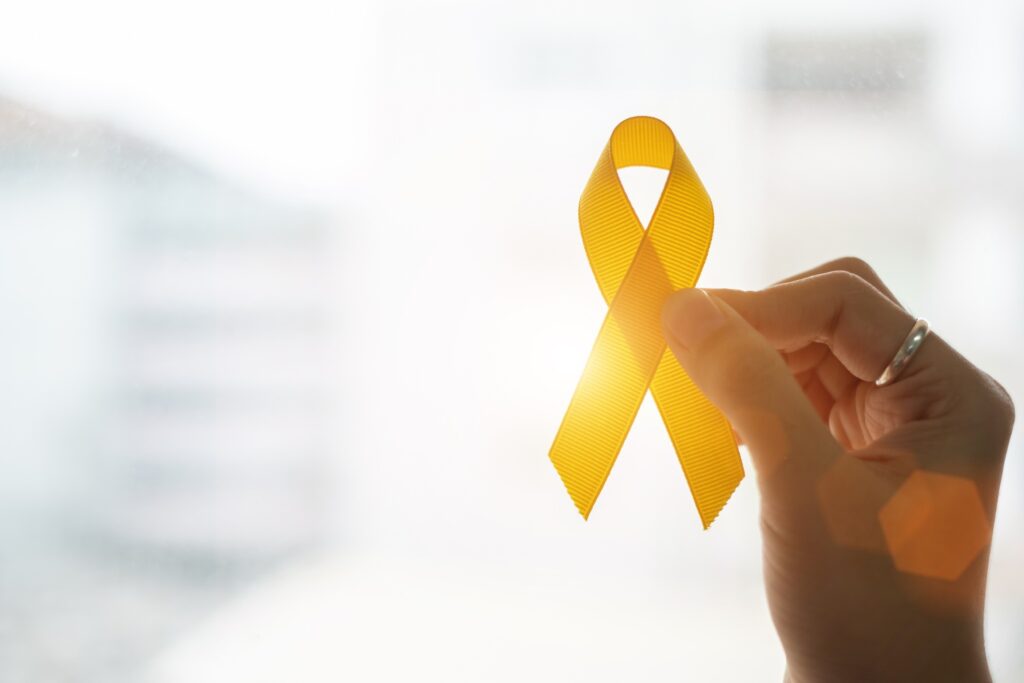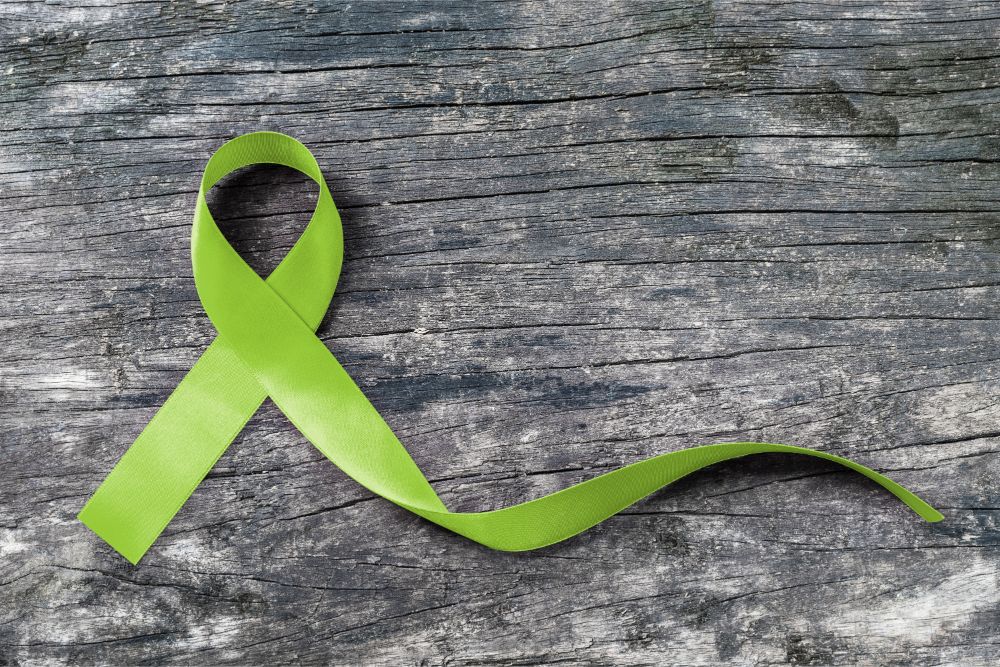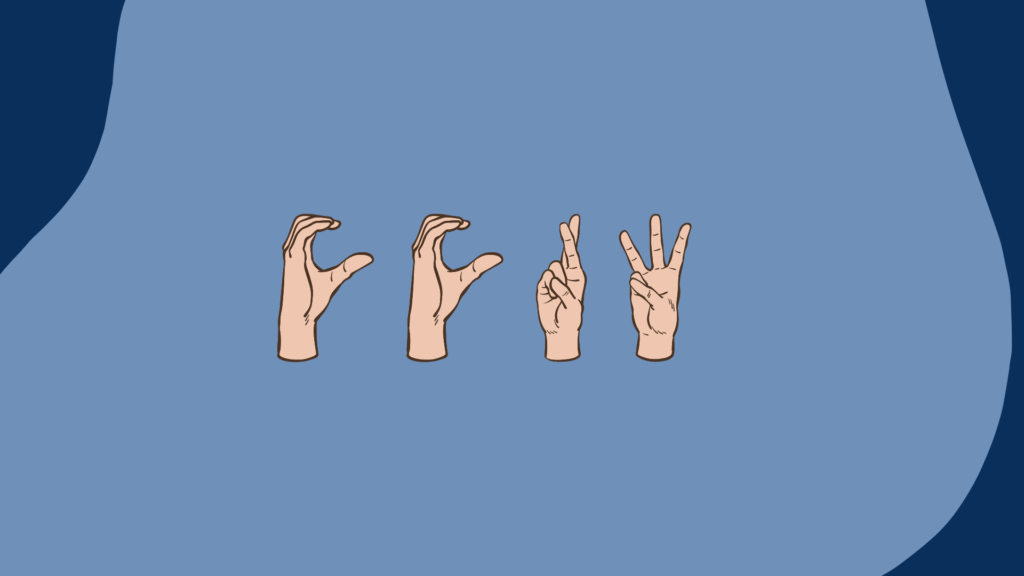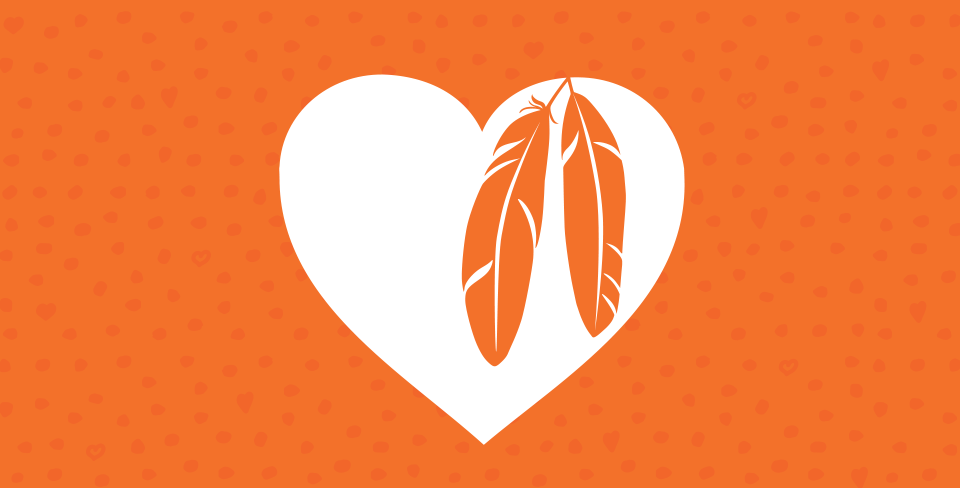In September, we acknowledge International Pain Awareness Month, Chiari Malformation Awareness Month, Charcot Marie Tooth Disease Awareness Month, Childhood Cancer Awareness Month, Duchenne Awareness Month, World Duchenne Day, World Physiotherapy Day, International Literacy Day, Fetal Alcohol Syndrome Day, Worldwide Cystic Fibrosis Day, Myotonic Dystrophy Day, National IT Professionals Day, World Chronic Myeloid Leukemia Day, Rosh Hashanah, Gender Equality Week, International Day of Sign Language and Orange Shirt Day.
Below, read more about each date of significance, written by members of our Inclusivity, Diversity, Equity and Accessibility (IDEA) Committee.
International Pain Awareness Month
Pain is something we all understand until it does not go away. Until it becomes a constant companion. Until it turns ordinary tasks into overwhelming challenges.
International Pain Awareness Month is not just about recognizing the existence of chronic pain. It is about understanding the complex realities faced by those who live with it every day. Imagine waking up feeling as tired as when you went to sleep. Moving through your day as though gravity weighs heavier on you than it does for others. You look fine. You smile. You work. But beneath the surface, your body is in a battle you did not choose and cannot walk away from.
Chronic pain does not always announce itself. There are no bandages, crutches or dramatic warning signs. It is often invisible, which means people who live with it also have to fight to be believed. It affects every part of life from relationships to employment, from sleep to self-worth. It can limit mobility, interfere with goals and create a sense of isolation that is hard to describe. Yet it is incredibly common, affecting more than one in five people worldwide.
This month reminds us that pain is more than a symptom. It is a human experience. It calls for care, respect and support, not skepticism, silence or shame. Pain is deeply personal, but the response to it should be collective. When we become more aware of what others may be carrying, we can build workplaces, schools, clinics and communities that are more compassionate and inclusive. Awareness leads to action. Action leads to better policies, better care, better lives and stronger communities.
This September, let’s:
- Be patient with those who move slower or cancel plans without explanation.
- Push for health systems that treat pain seriously and holistically.
- Amplify awareness, because someone you love is likely living with pain whether you know it or not.
Not everything that hurts is visible. But everything that hurts deserves attention.
Learn more about International Pain Awareness Month on our blog. Click here to read about Grandview Kids Ambassador, Suraj’s experience living with invisible pain caused by Somatization.

Chiari Malformation Awareness Month
September is Chiari Malformation Awareness Month, a time to recognize and better understand a condition that affects thousands of individuals and families.
Chiari malformation is a congenital condition that affects the lower back of the skull where the brain and spinal cord connect. In people with this condition, brain tissue extends into the spinal canal, placing pressure on the brain and potentially causing symptoms such as headaches, neck pain and reduced strength in the arms and hands. The severity and type of symptoms can vary widely, making diagnosis and treatment difficult until specific signs appear.
Every person’s experience with Chiari malformation is different. There are four types of Chiari, each indicating the progression of the condition and the severity of symptoms. Some people develop symptoms early in life, while others may never experience them. For those with symptomatic Chiari, the effects can be felt every day.
Muscle weakness and ongoing pain can severely limit participation in physical activities. Even standing for long periods can become a challenge. Some individuals experience incontinence, which can disrupt daily routines and affect quality of life. In more serious cases, people may lose a degree of independence or develop permanent disabilities. Many rely on mobility aids such as walkers, canes or wheelchairs, while others require neck braces or supportive devices to help hold their head up.
Charcot-Marie-Tooth Awareness Month
Charcot-Marie-Tooth (CMT) Awareness Month, observed each September, highlights the impact of this hereditary neurological disorder that affects more than 2.5 million people worldwide. The campaign aims to educate the public and highlight the daily challenges faced by individuals with CMT, such as muscle weakness, balance difficulties, mobility limitations and chronic pain. Despite being one of the most common inherited neurological conditions, CMT remains widely misunderstood and underfunded. This month honours the resilience of those living with CMT and their families while advocating for greater investment in research, improved care and ultimately the development of effective treatments to enhance the quality of life for those with this condition.
Learn more about Charcot-Marie-Tooth Disease Awareness Month on our blog. Click here to read about Grandview Kids Ambassador and Peer Navigator Ella W.’s lived experience with Charcot-Marie-Tooth disease.

Childhood Cancer Awareness Month
Childhood Cancer Awareness Month, observed each September, brings attention to the impact of paediatric cancer and the urgent need for more research, support and funding. Despite being a leading cause of disease-related death in children, childhood cancer receives only about four per cent of overall cancer research funding. This month honours the strength of young patients and their families while advocating for greater investment in research to develop safer and more effective treatments and ultimately find cures.

Duchenne Awareness Month
This September, we raise our voices for those living with Duchenne muscular dystrophy (DMD), a rare and progressive genetic disorder that primarily affects boys and leads to severe muscle degeneration over time. DMD is caused by mutations in the dystrophin gene, which plays a critical role in maintaining muscle strength and integrity. Although the condition is life-limiting, advances in care and research are improving outcomes and offering families hope.
Symptoms of DMD typically appear between the ages of two and five. Early signs may include frequent falls, difficulty running or climbing stairs and visibly enlarged calf muscles. As the disease progresses, most individuals lose the ability to walk by their early teens and face serious heart and lung complications in early adulthood. Greater awareness, early diagnosis and ongoing research are key to improving the quality of life for those affected and working toward a future with better treatments.
How is Duchenne different from Myotonic Dystrophy (DM)?
Understanding the differences between Duchenne muscular dystrophy (DMD) and myotonic dystrophy (DM) is essential for accurate diagnosis, proper care and effective advocacy. While both are forms of muscular dystrophy, they vary significantly in terms of onset, progression, genetic cause and impact on the body.
DMD typically begins in early childhood, usually between the ages of two and five. It progresses rapidly and severely, primarily affecting the muscles, heart and lungs. It is caused by a mutation in the dystrophin gene and is inherited in an X-linked pattern, meaning it mostly affects boys. In contrast, DM often appears during adolescence or adulthood and progresses more slowly. It is caused by a repeat expansion in the DMPK or CNBP genes and follows an autosomal dominant inheritance pattern, affecting both males and females. While both conditions can affect muscle strength and organ function, DM may also involve the eyes, brain and emotional or cognitive functioning, whereas DMD may be associated with learning difficulties.
Spread Awareness about Duchenne by:
- Wear gold or light up your space in gold
- Use hashtags #DuchenneAwarenessMonth and #KnowTheDifference
- Support organizations working toward treatments and inclusive care
- Learn more at defeatduchenne.ca/about-duchenne
World Duchenne Day: September 7
September is Duchenne Awareness Month in Canada, and September 7, 2025, marks the 12th annual World Duchenne Awareness Day. This year’s theme, Family: The Heart of Care, honours the essential role families play in supporting individuals affected by Duchenne and Becker muscular dystrophy.
Landmarks across the country will be lit in red to help raise awareness and show support for the Duchenne community.

World Physiotherapy Day: September 8
World Physiotherapy Day is observed every year on September 8. In 2025, the theme is healthy aging, with a focus on preventing falls and frailty.
The day highlights the unity and strength of the global physiotherapy community. It is an opportunity to recognize the vital work physiotherapists do for their patients and communities. World Physiotherapy uses this day to support member organizations in promoting the profession and advancing their knowledge and expertise.

International Literacy Day: September 8
International Literacy Day takes place on September 8 and highlights the importance of literacy for all. The day is observed by UNESCO, the United Nations Educational, Scientific and Cultural Organization, as part of its mission to promote education and foster peace through intellectual solidarity. The theme for 2025 is Promoting literacy in the digital age.
With the growing digitization of data and information, literacy is more important than ever. Traditional literacy skills now extend to digital platforms and are often necessary to access health services, secure employment and stay connected with loved ones. For the 739 million adults and young people who lack basic literacy skills, barriers to communication and essential services can lead to isolation and a reduced quality of life. The critical thinking developed through reading helps people navigate everyday challenges.
Reading is more than a source of enjoyment. It opens up the world, builds connection and helps individuals think through problems and gain essential life skills.

Fetal Alcohol Syndrome Day: September 9
Each year on September 9, Fetal Alcohol Syndrome Day (FASD) Awareness Day focuses on supporting individuals with fetal alcohol spectrum disorder and promoting education about the importance of alcohol-free pregnancies. The 2025 theme is Everyone Plays a Part: Take Action! This message encourages collective responsibility and calls on everyone to help create meaningful change around alcohol use during pregnancy.
Alcohol consumption during pregnancy can cause physical, behavioural and cognitive impairments in babies that can last a lifetime. There is no proven safe amount of alcohol to drink during pregnancy. Support for pregnant individuals struggling with alcohol addiction is available through local hospitals and community groups such as Alcoholics Anonymous and Al-Anon Family and Friends.
Children exposed to alcohol before birth may experience challenges with memory, switching between tasks, mental health and daily life skills.
For more information on FASD Awareness Day and how to support individuals and families, visit https://canfasd.ca/fasd-awareness-month/.

World Suicide Prevention Day: September 10
September 10 is World Suicide Prevention Day. Each year, more than 700,000 lives are lost to suicide worldwide, deeply affecting families, friends and communities beyond the numbers. Suicide is a complex issue with significant social, emotional and economic impacts, making it one of the most pressing challenges in global mental health.
Changing the conversation around suicide is essential. By encouraging honest and open dialogue, we can break down stigma, raise awareness and create supportive environments where people feel safe to reach out. Through compassion and connection, we can build communities that foster hope and promote mental wellness for all.
Worldwide Cystic Fibrosis Day: September 13
Worldwide Cystic Fibrosis Day is observed annually on September 8 to raise awareness about cystic fibrosis, a rare genetic disorder that primarily affects the lungs and digestive system. The disease interferes with the normal function of cells that produce mucus, sweat and digestive fluids, causing these secretions to become thick and sticky. This leads to serious respiratory and digestive challenges, infections and long-term health complications.
Cystic fibrosis was first identified in 1938 by Dr. Dorothy Andersen, who linked the deaths of malnourished children to the condition. Since then, improvements in medical care, early diagnosis and treatment have significantly increased the life expectancy and quality of life for people living with cystic fibrosis. While there is no cure, ongoing research continues to drive progress. Worldwide Cystic Fibrosis Day is an opportunity to raise awareness, support affected families and encourage further investment in research and care.
Myotonic Dystrophy Day: September 15
September 15 marks Myotonic Dystrophy Day, a day to raise awareness for a rare inherited disorder that affects muscles and multiple systems including the heart, lungs, eyes and brain.
Myotonic dystrophy (MD) is the most common form of adult-onset muscular dystrophy, yet it remains widely underdiagnosed. It is caused by a repeating DNA segment often referred to as a “genetic echo,” which can worsen across generations. Symptoms may include muscle stiffness, fatigue, breathing issues and cognitive challenges. Many adults with MD, especially those with type 2 (MD2), can go years without a diagnosis. Symptoms such as tiredness, mild muscle weakness, or stiffness are often mistaken for signs of normal aging or unrelated conditions.
Awareness is essential. DM is frequently misdiagnosed and can lead to life-threatening complications, particularly in response to certain forms of anesthesia. Increased awareness supports research, improves care and helps prepare patients and clinicians for participation in clinical trials.
Since 2021, landmarks around the world have lit up in green for Myotonic Dystrophy Day, from castles in the United Kingdom to bridges in Australia. This year, more than 60 global organisations are joining forces to educate clinical teams and empower patients.
You can help by wearing green, lighting up your space and sharing facts and stories using #MyotonicDystrophyAwareness. Support patient registries, advocacy groups and community education efforts to make a lasting impact.
On the Grandview Kids blog, Grandview mom Mallory shares her and her daughter Deliah’s experience with Myotonic Dystrophy Type 1 and the transformative journey they have taken through Grandview Kids. Click here to read Deliah’s story.

World Lymphoma Awareness Day: September 15
World Lymphoma Awareness Day is held every year on September 15. It is a global initiative led by the Lymphoma Coalition, a non-profit network of 83 lymphoma patient groups across 52 countries.
Lymphoma is a group of blood and lymphatic system cancers that develop from lymphocytes, a type of white blood cell. It is a potentially life-threatening disease and is increasing in incidence around the world.
A global patient survey conducted in 2008 revealed major gaps in public understanding. Only 49 per cent of respondents said they knew what lymph nodes do. More than half reported knowing little or nothing about lymphoma. Two-thirds did not know lymphoma is a type of cancer or that it has one of the fastest rising incidence rates globally. Ninety per cent believed not enough is being done to fund lymphoma research.
Raising awareness helps people better recognize the signs and symptoms of lymphoma, leading to earlier diagnosis and more timely treatment. It also empowers patients and families to seek care from specialists and access the latest support, information and treatment options.
National IT Professionals Day: September 16
Started in 2015 by SolarWinds, a provider of hybrid IT infrastructure management software, National IT Professionals Day celebrates the information technology experts who keep businesses running. The day honours all IT professionals, regardless of their discipline. This includes network engineers, database administrators, system administrators, developers, IT support technicians and information security specialists.
Observed every year on September 16, the day is an opportunity to recognize and thank IT professionals for their hard work and expertise. Celebrate by expressing appreciation to those working in IT or by taking the opportunity to learn more about the field. Consider signing up for an online course or reading a book about information technology.

World Chronic Myeloid Lukemia (CML) Day: September 22
World Chronic Myeloid Leukemia (CML) Day is observed globally on September 22. It raises awareness about this rare type of blood cancer caused by a genetic mutation involving chromosomes 9 and 22. The day is a time to reflect on the experiences of those living with CML, including challenges related to access to care, stigma and financial hardship faced by patients and their families.
In people with CML, the bone marrow produces too many immature white blood cells that do not function properly. Early diagnosis and treatment are key to managing the disease. CML Day also recognizes progress in treatment. While a cure is still being pursued, advancements in therapies and medicines have allowed many patients to live strong and healthy lives.
The goal of CML Day is to raise awareness and advocate for the support systems patients and families need. Education and recognition remain core to this observance. The theme for September 22, 2025, is “Equity in action: Leaving no CML patient behind.”
Rosh Hashanah: September 22
This year Rosh Hashanah begins on the evening of Monday, September 22, 2025 and concludes after nightfall on Wednesday, September 24. In the Hebrew calendar it falls on 1–2 Tishrei, 5786. But this is not just another holiday, it marks the birthday of the universe.
Rosh Hashanah, which literally means “head of the year” in Hebrew (ראש השנה), is the Jewish New Year. It commemorates the creation of Adam and Eve and, by extension, all of humanity. It also marks day one of the Days of Awe (Yamim Noraim), a 10‑day period of introspection that culminates with Yom Kippur. The day is also known as Yom Hazikaron (Day of Remembrance) and Yom Hadin (Day of Judgement), reflecting the belief that God reviews every person’s deeds and decides their fate for the coming year.
This sacred observance is marked by lighting candles in the evenings, enjoying festive meals with sweet foods, attending prayer services that include the sounding of the ram’s horn (shofar) on both mornings and refraining from creative work.

Gender Equality Week: September 22 to 28
Gender Equality Week is observed in Canada during the fourth week of September and highlights the importance of creating inclusive spaces where everyone can thrive regardless of gender identity or expression. It is a time to reflect on progress made toward equality and the work that remains to address systemic barriers. This week encourages all Canadians to take action toward building a more just and equitable society.
International Day of Sign Languages: September 23
September 23 marks the International Day of Sign Languages, a United Nations recognized occasion that highlights the importance of sign languages in upholding the human rights of Deaf individuals and sign language users around the world. The day aims to raise awareness of the unique experiences and challenges faced by the Deaf community while celebrating the cultural and linguistic richness of sign languages. Sign language is more than a means of communication. It fosters inclusion, connection and full participation in society. It is also a gateway to a vibrant cultural identity that deserves recognition and respect. By promoting and embracing sign languages, we help build a more inclusive, accessible and equitable world where everyone has the opportunity to be heard and understood.

Orange Shirt Day: September 30
Orange Shirt Day, observed on September 30, is an Indigenous-led commemoration that honours the experiences of residential school survivors and their families. The orange shirt has become a symbol of the loss of culture, freedom and self-esteem that many Indigenous children experienced in these institutions. The phrase “Every Child Matters” emphasizes the importance of acknowledging past injustices and committing to reconciliation.
The date was chosen because it aligns with the time of year when Indigenous children were removed from their homes to attend residential schools. Wearing an orange shirt on this day is a powerful act of solidarity and a reminder of the need to stand against racism and bullying. It is also a call for First Nations, local governments, schools and communities to come together in the spirit of reconciliation and hope for future generations.

Check out more Grandview Kids articles
- “Grandview Kids became my life raft” – International Day for People with Disabilities
- December: Dates of Significance
- From the search for support to finding a village: Celebrating Giving Tuesday
- Scarlett sparkles with hope in every step: Grandview Kids 2025 Holiday Campaign
- Volunteer Spotlight – Heather A.
